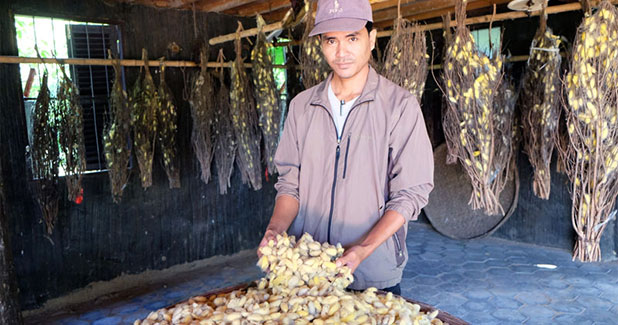
Kapangan to revive silk industry
Kapangan started engaging in silk in the 1970s, rekindled in 2005 which eventually became the town’s one town, one product and has the widest mulberry production area of 15.75 hectare is hoping to revive the silk industry in the municipality.
Kapangan started engaging in silk in the 1970s, rekindled in 2005 which eventually became the town’s one town, one product and has the widest mulberry production area of 15.75 hectare is hoping to revive the silk industry in the municipality. Kapangan is situated on the northern part of Benguet province in the Cordillera Administrative Region of the Philippines.
As the industry slowly dwindled because of the lack of raw silk, which also slowed down the production of silk products despite the aim to be known as the silk capital of the country in 2007. The town was earlier known as one of the country’s largest cultivation areas for marijuana but due to government and non-government organisation’s efforts, Kapangan transformed its mountainside growing mulberry trees, the main food of silk-producing worms from China and Japan, after sericulture was introduced in nine of Kapangan’s 15 villages in late 2004.
The municipality has coordinated with the Department of Science and Technology (DOST) and the Department of Tourism Cordillera for the silkworm operations. DOST Regional Director Venus Tan acknowledged the enthusiasm of Kapangan to focus in planting mullberries.
CATEGORIES Industry Update




